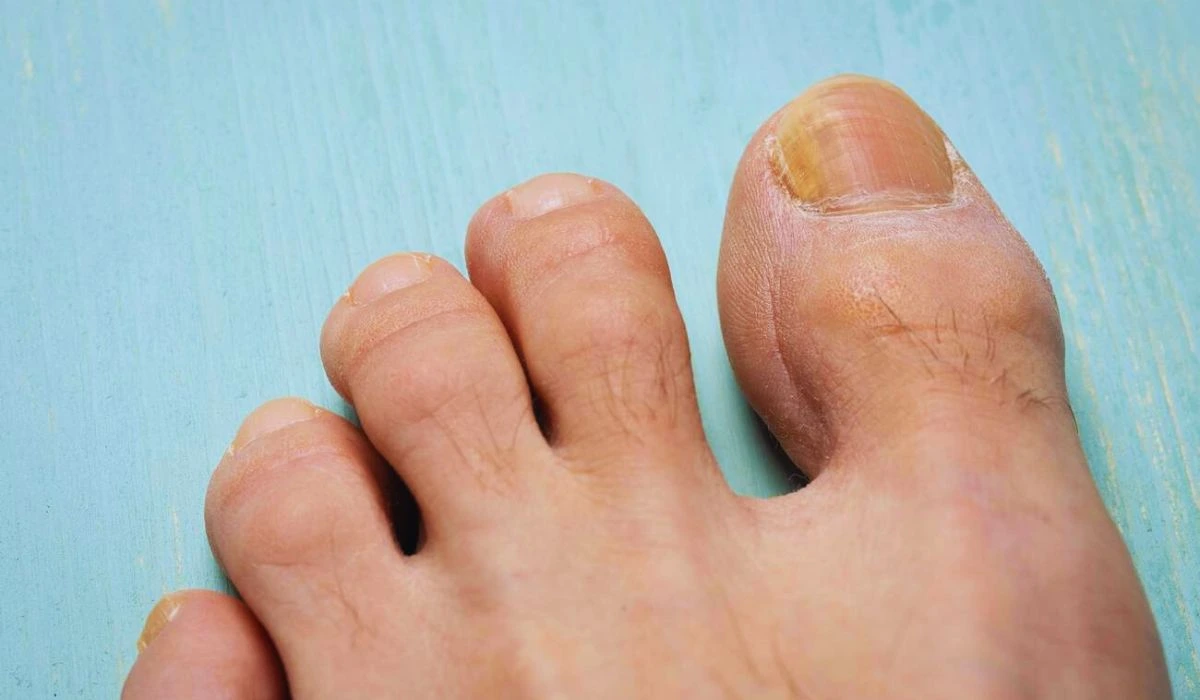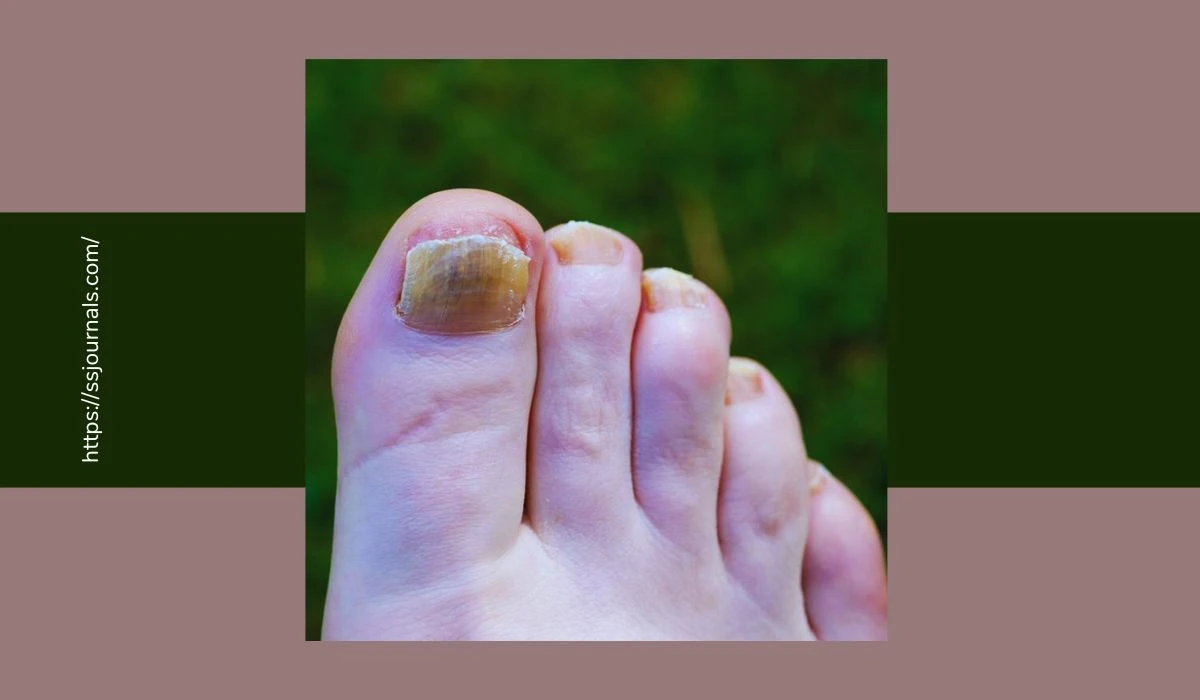Toenail fungus, also known as onychomycosis, is a common nail infection that affects millions of people worldwide. It occurs when fungi, such as dermatophytes, infect the nail bed and begin to grow, causing the nail to become discolored, thickened, brittle, and distorted in shape.
Many people wonder – is toenail fungus contagious? Can you catch it from others? In this article, we’ll explore what causes toenail fungus, the symptoms, whether it’s contagious, treatment options available, and answer some frequently asked questions about this condition.
What Is Toenail Fungus? Causes & Symptoms
Toenail fungus is caused by microscopic organisms called dermatophytes which feed on keratin, the protein found in nails.

Dermatophytes thrive in warm, moist environments like showers, locker rooms, and pools. Several factors can increase your risk of developing toenail fungus:
- Wearing tight-fitting shoes and socks that don’t allow proper ventilation
- Having an athlete’s foot
- Injuring the toenail bed
- Having a suppressed immune system
- Having damp feet for extended periods
- Using public showers and pools
The most common symptoms of toenail fungus include:
- Thickened, brittle, distorted nails
- Debris building up under the nail
- White, yellow, black, or green discoloration
- Crumbling, ragged edges
- Pain or discomfort in the toe
- Unpleasant odor coming from the nail
In the early stages, you may notice a small white or yellow spot developing underneath the tip of your toenail. As the infection progresses, the nail will become opaque and discolored. If left untreated, the infection can spread to other toenails and the skin.
Also Check: What Is The Cause Of Foot Fungus? Root Causes Explained
Are Toenail Fungus Contagious?
The short answer is yes, toenail fungus is contagious under certain conditions. The fungi that cause onychomycosis can spread from person to person in damp public places like swimming pools, locker rooms, and showers. You can also catch it by sharing contaminated items like towels, socks, and nail clippers.
That said, catching toenail fungus from surfaces is less common. The fungi have difficulty thriving on hard surfaces. It’s more likely to spread through direct contact with an infected person or by wearing contaminated shoes and socks.
You’re also more prone to infection if you have small cuts or tears in your toenails that allow the fungus easy entry. People with weakened immune systems are at a higher risk of developing toenail fungus.
So while contagious, toenail fungus doesn’t spread as easily as something like a cold or flu virus. With some basic hygienic precautions, you can avoid catching or spreading it.
Treatment Options For Toenail Fungus
Several treatment options for toenail fungus are available, including:
✅ Medications
Antifungal medications like terbinafine or itraconazole can be taken orally for up to 12 weeks to treat toenail fungus. These penetrate the nail bed and disrupt the fungus’ growth. Topical antifungal lacquers and solutions can also be applied directly onto the affected nail.
✅ Laser Therapy
A relatively new treatment, laser therapy uses specialized devices to penetrate the nail and disrupt fungal growth. Multiple sessions are required but it has high success rates.
✅ Surgical Removal
For severe cases, the infected part of the nail can be surgically removed. The nail will eventually grow back fungus-free.
✅ Natural Remedies
While not as potent as medications, some home remedies like tea tree oil, vinegar soaks, and Vicks VapoRub may help mild infections. Proper hygiene and moisture control also aid recovery.
Regardless of the treatment option, focusing on cleaning and fully drying the feet daily is key. Wear clean socks, avoid sharing footwear, and trim nails straight across to avoid reinfection. Seeking early treatment offers the best prognosis.
Read More: What Causes Tingling In Feet? How To Prevent It Effectively?
Conclusion
Toenail fungus is a common problem that can cause pain, discomfort, and embarrassment. The condition is contagious through direct contact and shared items. However, the fungi have difficulty spreading on surfaces.
With treatment and proper foot hygiene, infections can be cured. Catching it early improves success rates. If you notice any nail discoloration or thickening, see your doctor right away for an evaluation. With the right treatment, you can eliminate toenail fungus and enjoy healthy, fungus-free nails again.
FAQ
A: The most common causes of toenail fungus include exposure to damp public areas, athlete’s foot, wearing tight shoes and socks, injuring the nail, weakened immunity, and poor foot hygiene.
A: No, they are caused by different fungal organisms. However, having an athlete’s foot increases your risk of developing toenail fungus.
A: In rare cases, a mild toenail fungal infection may go away without treatment. However, most require oral or topical antifungal medication prescribed by a doctor to fully eliminate the infection.
A: With consistent treatment, it can take 3-6 months to eliminate a fungal toenail infection, with the nail growing back completely clear in 9-12 months. Proper foot hygiene helps prevent reinfection.
A: Preventative measures like wearing clean, dry socks, avoiding tight shoes, drying feet thoroughly, and not sharing nail care tools can reduce your risk of developing toenail fungus. Treating an athlete’s foot also lowers the chances of infection.

